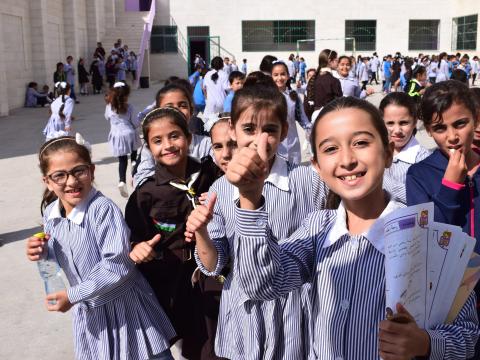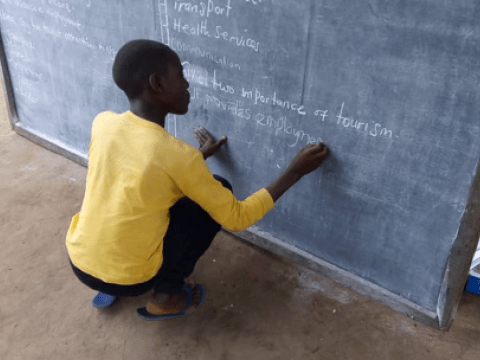
Why children should get cell phones and TVs
By Jasenko Eminovic
“Since the beginning of the outbreak, I did not go to school and did not study. I heard that lessons are given through TV channels, but we do not have TV and radio at home.” - A 13-year-old girl from Afghanistan.
The COVID-19 pandemic forced millions of children to stay at home and out of school. Despite planned school re-opening in certain regions, 46% of the world’s learners remain impacted by school closures.
Governments, global education stakeholders, civil society, and educators have collaborated to ensure learning continues, while working to contain the virus and support the health and well-being of learners. Yet, almost 1 in 4 children surveyed in the Middle East and Eastern Europe region by World Vision recently said they had not been able to carry on their studies.
A major reason for this is poverty, which has exacerbated exclusion from education, health, and social inclusion during the pandemic, and, as a result, is preventing countries from realising the SDG4 targets which aim to “ensure inclusive and equitable quality education and promote lifelong learning opportunities for all.”
When having less prevents schooling
During the imposed lockdown, many schools and teachers around the globe scrambled to get school work done through various channels such as social media platforms, online platforms and regular media. For other schools, especially those in fragile contexts such as Afghanistan, Syria and Iraq, the shift to distance learning was simply not possible, and, as a result, many children have been deprived of their education.
Out of the surveyed children enrolled in formal education across the Middle Eastern and Eastern European countries where we work, 75.7% said that their school shifted to distance learning, yet 24.3% were completely unable to continue their education.
Due to a lack of access to an internet connection, electronic devices, electricity, and educational resources, combined with the illiteracy of their parents, some girls and boys were left without any learning opportunities at all.
Children struggle even with digital access
“The online learning was challenging; we had more homework to do and exams and we had to find our own ways to learn without much support and guidance from teachers.” - A 14-year-old girl from Bosnia and Herzegovenia.
More than half (58%) of children whose schools shifted to distance learning said that their major challenge was related to the lack of or weakness of their internet connection. More than 50% had concerns about losing contact with their teachers, and 46% were concerned about being isolated from classmates.
The lack of digital devices and the obligation to share the few available devices with parents and siblings, seem to be two major concerns for 43.1% and 40.5% of surveyed girls and boys respectively.
“It took me long time to get used to the online school and learn how to use the platform. I had difficulty connecting, and sending homework at the beginning.” A 15-year-old boy from Romania.
Responding to what we heard
Comments like the ones highlighted above urged World Vision to think how we can better support future generations by creating the best possible environment and have the best possible opportunities to study.
While each country context is different, the results of the child consultation in our region we have decided to:
-
Document practices and lessons learned from the pandemic and the risks faced by children with multiple vulnerabilities. This will help us develop strategies for ensuring ongoing and non-interrupted, quality and inclusive education to all children;
-
Ensure funding and educational support to uphold children’s right to education by providing opportunities for children, especially girls, to continue their education through online platforms wherever possible, and ensuring other forms of communication such as radio or TV are available for those children who do not have access to the internet;
-
Encourage corporate donors to contribute to improving the situation of children in their countries with financial or in-kind donations (such as IT equipment) or their employees' time;
-
Establish a multi-sectorial approach for education financing to avoid the burden of the responsibility falling squarely on the education budget. Sectors, such as health, social protection, gender and technology must collaborate to increase affordable and sustained access to care, well-being, and education during emergencies; and,
-
Recognising the way domestic violence affects all areas of a child’s life including education, provide urgently needed funding for child protection programming, including for children and caregivers’ psycho-social support, and gender-based violence response services.
Read World Vision's Act Now report for the Middle East and Eastern Europe region here. And the global Act Now report here.
Jasenko Eminovic is World Vision's Programme Development & Quality Assurance Director in the Middle East and Eastern Europe regional office.
